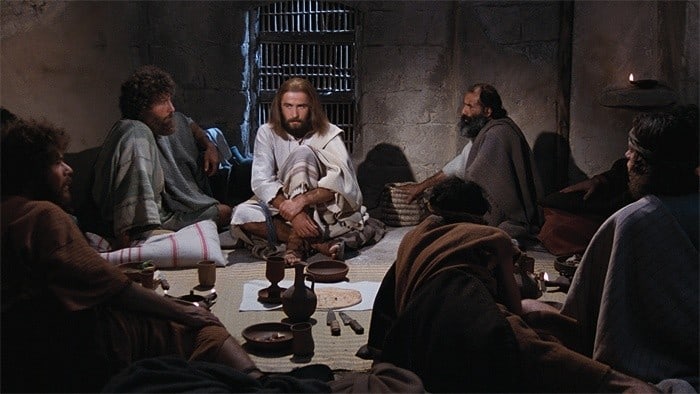According to Dallas Theological Seminary Professor Darrell L. Bock, Luke’s Gospel didn’t always receive a lot of attention.
In the IVP New Testament Commentary on Luke, Bock says, “For a long time, Luke was the most neglected of the Gospels. Matthew was the most popular Gospel in the early church, because of its apostolic roots. John was always highly regarded because of its explicit presentation of Jesus. Mark came to be an important Gospel in the nineteenth century, when many scholars began to argue that it was the earliest; its association with Peter also did not hurt its reputation. Luke was often the odd man out.”
But for many modern readers, Luke is an extremely compelling Gospel. After all, it has a keen focus on Gentile inclusion into the kingdom of God and, along with its sequel, the Acts of the Apostles, it reveals how Jesus’ ministry became a movement that changed the world.
Here are five interesting facts about the Gospel of Luke:
1. It’s the longest Gospel (and New Testament book)
If you were to judge book length based on the number of chapters, you’d walk away thinking that Matthew and Acts are longer than Luke. After all, they both have 28 chapters and Luke’s Gospel only contains 24.
But with a word count of 19,482, Luke’s is actually the longest. Acts has 18,450 Greek words, while Matthew’s contains 18,346.
In fact, even though Paul wrote the most books in the New Testament (13) followed by John (5), Luke is actually the New Testament’s most prolific author by sheer volume.
2. The symbol of Luke’s Gospel is an ox
Christian tradition has long associated each of the Gospels with one of the four faces encountered by Ezekiel (1:1-14). The “human” is associated with Matthew, the “lion” with Mark, the “eagle” with John, and the “ox” has become the symbol of Luke’s Gospel.
The early church made the connection between Luke and ox because of the book’s sacrificial connotations. Oxen were used in temple sacrifices. The Book of Luke opens with Zechariah offering a sacrifice in the temple. It also includes the parable of the prodigal son, in which a fattened calf is offered.
To the early church, the ox represented the priestly character of our Lord and His sacrifice on our behalf.
3. Luke is the only Gospel written by a Gentile
While debate still abounds, it’s traditionally accepted that Luke was a Greek, and the only Gentile author of a Gospel. Not only is Luke considered the only Gentile writer, but both Luke and Acts (traditionally considered one work) were written to share the story of Christ and the rise of the church with “Theophilus.”
There are a number of theories into this person’s identity, most of them assuming Theophilus to be a high-ranking or prominent Gentile himself-making Luke the only Gospel written by a Gentile for a Gentile audience.
4. Luke was a physician
In the fourth chapter of Paul’s letter to the Colossians, he calls Luke a doctor (4:14). You can also see evidence of Luke’s profession in the medical language he uses. In Acts 28:8, Luke says:
“His father was sick in bed, suffering from fever and dysentery. Paul went in to see him and, after prayer, placed his hands on him and healed him” (New International Version).
The Greek Luke uses for “suffering from fever and dysentery” (puretois kai dusenterio sunechomenon) is the actual correct medical terminology that one might find in the works of Hippocrates. In Luke 14, we encounter a man with dropsy. Luke uses the word hudropikos, which occurs nowhere else in the Bible but can also be found in Hippocratic writings.
It’s interesting to note that in Mark’s account of the bleeding woman, he makes the following statement:
“She had suffered a great deal under the care of many doctors and had spent all she had, yet instead of getting better she grew worse” (Mark 5:26, NIV).
Luke’s version seems to leave a better impression of the medical community:
“And a woman was there who had been subject to bleeding for twelve years, but no one could heal her” (Luke 8:43, NIV).
5. It features unique and well-known parables
Each of the Gospels features some unique stories, elements and teachings, but Luke is particularly packed with interesting and distinct parables. These include the parable of the prodigal son (15:11-32) and the good Samaritan (10:29-37).
Here are some other parables that are limited to Luke’s Gospel:
- Parable of two debtors (7:40-43)
- Parable of the friend at midnight (11:5-8)
- Parable of the rich fool (12:13-21)
- Parable of punishment (12:47-48)
- Parable of the barren tree (13:1-9)
- Parable of the lost coin (15:8-10)
- Parable of the shrewd manager (16:1-12)
- Parable of the rich man and Lazarus (16:19-31)
- Parable of the persistent widow (18:1-8)
- Parable of the Pharisee and the tax collector (18:9-14)
The Gospel of Luke and the “JESUS” film
Luke’s Gospel is particularly important to us as it’s the Gospel that the “JESUS” film is based upon. In 1979, “JESUS” premiered in 250 U.S. theaters. Since then, it has been translated to more than 1,700 languages and shown all over the world, leading to more than 572 million decisions for Christ!
If you’re interested in watching Luke’s Gospel portrayed in the “JESUS” film (or more than 200 other videos), download the for Apple or Android devices!
